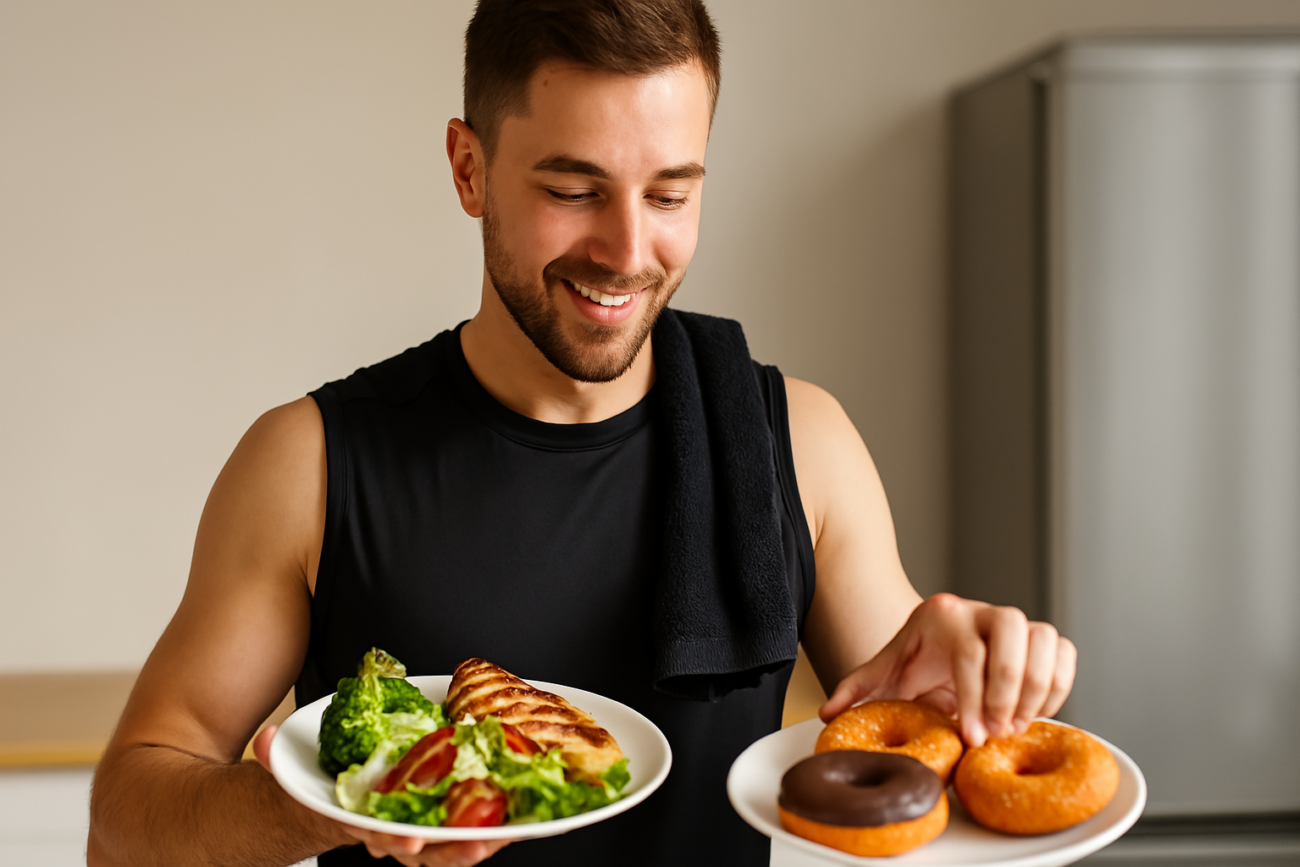Introduction:
Ever finished a workout and felt like you could eat everything in sight—or nothing at all? You’re not alone. One of the most overlooked yet fascinating effects of physical activity is how it influences our appetite. From shifts in hunger hormones to the way we choose our meals post-workout, exercise and appetite are more deeply connected than most people realize.
While many turn to fitness for weight loss or performance, understanding how it impacts when, what, and how much we eat can lead to smarter choices and better results. Interestingly, when we look back at the life of Prophet Muhammad (PBUH), we find timeless, balanced practices that naturally align with what modern science now recommends for post-activity nourishment.
Let’s explore how exercise affects hunger, cravings, and eating behavior—alongside the wisdom of the Prophet (PBUH)—to help you fuel your body with both purpose and balance.
✅ 1. The Science Behind Exercise and Appetite
Exercise influences your appetite hormones, particularly ghrelin (the hunger hormone) and leptin (which helps you feel full). Depending on the intensity and duration of your workout, your appetite may be suppressed or heightened—a phenomenon called exercise-induced anorexia.
Intense activity, like HIIT or long-distance running, often reduces appetite immediately afterward, while low to moderate exercise may gradually increase it over the next few hours.
🕊️ Recommended Insight: The Prophet (PBUH) recommended moderation in eating—even when hungry. His advice was to eat in thirds: one-third food, one-third water, and one-third air. This wisdom helps regulate appetite naturally.
Harvard Health – How Exercise Affects Hunger
CDC – Physical Activity Guidelines
✅ 2. Understanding Hunger After Exercise
Why do some people feel ravenous after workouts while others can’t stand the thought of food?
Factors that affect hunger after exercise include:
- Workout intensity and length
- Time of day (morning workouts may suppress appetite longer)
- Hydration and sleep quality
It’s important to listen to your body’s true hunger cues rather than eating just out of habit or emotional reward.
💡 Tip: Wait 20–30 minutes after your workout, then reassess your hunger. Start with something light and nourishing—just as the Prophet (PBUH) often did after physical exertion or fasting..
✅ 3. How Exercise Influences Food Choices
Regular exercise is proven to influence not just hunger, but also food choices. Active individuals are more likely to crave healthier, nutrient-dense options like fruits, vegetables, and lean proteins.
There’s a behavioral and biological explanation: movement increases dopamine sensitivity, making natural, whole foods feel more rewarding.
🕊️ Sunnah Connection: The Prophet (PBUH) often broke his fast or replenished energy with dates and water—a combination high in natural sugars, fiber, and hydration. These foods not only satisfy hunger but encourage cleaner, more intuitive eating.
✅ 4. Post-Exercise Food Intake: What and When to Eat
Post-workout is a prime time for recovery. The right combination of carbohydrates, protein, and healthy fats can restore energy and promote muscle repair.
Healthy Eating Post-Workout Ideas:
- Dates with a glass of milk
- Greek yogurt with fruit and honey
- Protein smoothie with oats
- Scrambled eggs and whole grain toast
🕊️ Tip: Milk was considered a complete food by the Prophet (PBUH). He often drank milk after exertion or long journeys. It’s rich in protein and electrolytes—perfect for replenishing the body naturally.
✅ 5. Caloric Intake After Exercise: Finding the Balance
It’s common to overestimate how many calories you’ve burned and end up eating more than your body needs. This can lead to frustration, especially if your goal is weight management.
Instead of focusing on numbers, shift to fueling your body with what it needs, not what it’s been “earned.”
🕊️ Guidance: The Prophet (PBUH) emphasized eating in moderation. Even after fasting or physical strain, he chose simple, wholesome foods in appropriate amounts.
✅ 6. Managing Diet with Exercise: Practical Tips
WTo effectively align your diet with exercise, try the following habits:
- Hydrate first: Water helps distinguish thirst from hunger.
- Eat mindfully: Sit down, pause, and chew slowly.
- Prepare in advance: Plan meals so you don’t grab processed foods post-workout.
- Focus on quality over quantity: Choose whole foods that nourish your body.
🕊️ Prophetic Habit: The Prophet (PBUH) drank water in sips, not gulps, and advised against overeating. This practice promotes better digestion and awareness of fullness.
✅ 7. Meal Planning for Exercisers
SSmart meal planning for exercisers doesn’t mean restriction—it means choosing foods that support your body’s recovery and energy levels.
Sample Prophetic-Inspired Meal Plan:
- Pre-Workout:
Dates + water (natural energy boost) - Post-Workout Snack:
Milk with a teaspoon of honey - Lunch:
Grilled fish or chicken, whole grain bread, olive oil, and greens - Dinner:
Light soup or stew with lentils and barley - Evening (if needed):
A few nuts or a spoonful of yogurt
🕊️ Note: All these foods were part of the Prophet’s (PBUH) regular diet—proven to be balanced and naturally nourishing.
🧠 Conclusion: Exercise Is the Gateway to Smarter Eating
Understanding the link between exercise and appetite goes far beyond managing weight. It’s about tuning into your body, supporting its natural rhythm, and approaching food as fuel—not as a reward.
By following modern science alongside the Sunnah practices of Prophet Muhammad (PBUH), we gain a powerful framework for health: one that balances physical vitality with spiritual mindfulness.
So next time you move your body—whether walking, stretching, or training—pause afterward. Reflect. Nourish with intention. Choose what’s good for your body, your soul, and your long-term well-being. 💪🥗
Disclaimer: The content here is for educational and informational purposes only. Readers must consult certified health experts for specific questions and concerns before making any choices.


One thought on “Exercise and Appetite: How Physical Activity Shapes When, What, and How Much We Eat”